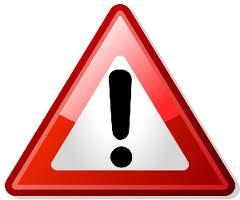
Chess Annotation Punctuation
?? (Blunder)
The double question mark "??" indicates a blunder, a very bad mistake. Typical moves which receive double question marks are those that overlook that the queen is under attack or overlook a checkmate. Whether a single or double question mark is used often depends on the player's strength. For instance, if a beginner makes a serious strategic error (for instance, accepting gratuitous pawn weaknesses or exchanging into a lost endgame) or overlooks a tactical sequence, this might be explained by the beginner's lack of skill, and be given only one question mark. If a master were to make the same move, some annotators might use the double question mark to indicate that one would never expect a player of the master's strength to make such a weak move.
? (Mistake)
A single question mark "?" after a move indicates that the annotator thinks that the move is a poor one that should not be played. However, the nature of the mistake may be more strategic than tactical; in some cases, the move receiving a question mark may be one that is difficult to find a refutation for.
?! (Dubious move)
This symbol is similar to the "!?" (below) but usually indicates that the annotator believes the move to be objectively bad, albeit hard to refute. The "?!" is also often used instead of a "?" to indicate that the move is not all bad. A sacrifice leading to a dangerous attack which the opponent should be able to defend against if he plays well may receive a "?!". Alternatively, this may denote a move that is truly bad, but sets up an attractive trap.
!? (Interesting move)
The "!?" is one of the more controversial symbols. Different books have slightly varying definitions. Among the definitions are "interesting, but perhaps not the best move", "move deserving attention", "enterprising move" and "risky move". Usually it indicates that the move leads to exciting or wild play and that the move is probably good. It is also often used when a player sets a cunning trap in a lost position. Typical moves receiving a "!?" are those involving speculative sacrifices or dangerous attacks which might turn out to be strategically deficient.
Andrew Soltis jokingly called "!?" the symbol of the lazy annotator who finds a move interesting but cannot be bothered to work out whether it is good or bad.[2]
! (Good move)
While question marks indicate bad moves, exclamation points ("!") indicate good moves—especially ones which are surprising or involve particular skill. Hence annotators are usually somewhat conservative with the use of this symbol; for example, they would not annotate a game thus: 1.e4! c5! 2.Nf3! d6! 3.d4! cxd4! 4.Nxd4! Nf6! 5.Nc3! All the moves of this main-line Sicilian Defence are good ones, but the players have demonstrated little skill by simply following well-known opening theory.
Once the players start making good choices when faced with difficult decisions, however, a few moves may receive exclamation points from annotators. Typical moves receiving exclamation points are strong opening novelties, well-timed breakthroughs, sound sacrifices, and moves that avoid falling into traps.
‼ (Brilliant move)
The double exclamation point ("‼") is used to praise a move which the annotator thinks really shows the player's skill. Such moves are usually hard to find. These may include sound sacrifices of large amounts of material and moves that at first glance seem very counter-intuitive.
